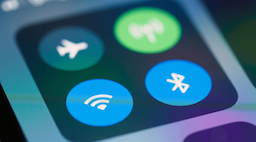
7 Failed Elon Musk Predictions That Will Make You Question Everything

1. 1 Million Robotaxis by 2020
In 2019, Musk claimed Tesla would have 1 million autonomous taxis operating by 2020. Not only did this fail to happen, but full self-driving technology remains far from Level 5 autonomy.
“I feel very confident predicting autonomous robotaxis for Tesla next year. Not in all jurisdictions because we won’t have regulatory approval everywhere. But I’m confident we will have at least regulatory approval somewhere literally next year,” Musk said on stage at the Tesla Autonomy Investor Day in Palo Alto in April 2019.
Around the same time, Musk made another audacious claim about Tesla's dominance in the autonomous vehicle space. He said owning any car other than a Tesla by 2022 would be like owning a horse, because only Tesla would have the hardware necessary for full self-driving capabilities.
"If you buy a car that does not have the hardware for full self-driving, it is like buying a horse," Musk said. "And the only car that has the hardware for full self-driving is a Tesla."

2. Hyperloop: LA to SF in 30 Minutes
In 2013, Musk introduced the Hyperloop concept, an ambitious plan for high-speed travel between LA and San Francisco. The proposed 380-mile route, with speeds up to 760 mph, has faced engineering challenges similar to Japan's decades-long maglev development.
"A Loop is like a Hyperloop, but without drawing a vacuum inside the tube. Don't need to get rid of air friction for short routes," Musk tweeted in November 2017.
By 2018, Musk had scaled back his ambitions considerably. Instead of the high-speed Hyperloop, he held a press conference with Chicago's mayor to announce a more modest "Loop" system - essentially a tunnel between downtown Chicago and O'Hare Airport that would transport passengers in just 12 minutes.
“We’re taking a bet on a guy who doesn’t like to fail — and his resources. There are a bunch of Teslas on the road. He put SpaceX together. He’s proven something,” Chicago Mayor Emanuel said about the project.
The reality turned out to be even more modest than that. The only existing Loop system ended up in Las Vegas, and instead of the promised autonomous 16-passenger vehicles traveling at high speeds, it consists of regular Tesla cars being driven by humans at conventional speeds through a tunnel. The ambitious LA to SF Hyperloop, like many of Musk's boldest predictions, remains unrealized

3. Mars Colony by 2024
In 2016, Musk laid out one of his most ambitious visions yet: establishing a human colony on Mars by 2024. But the details of this prediction became even more extraordinary when he discussed the scale of his plans.
"I'm hopeful that the first people could be taken to Mars in 10 to 12 years," Musk told CNBC in June 2014. "I think it's certainly possible for that to occur."
But Musk wasn't just talking about sending a few astronauts. He envisioned creating an entire self-sustaining city on Mars, predicting that 1 million people would be living on the red planet by 2050. The logistics of this plan were staggering - according to analyses cited in the sources, it would require around 100,000 trips by Starship spacecraft and trillions of dollars.
"But the thing that matters long term is to have a self-sustaining city on Mars, to make life multi-planetary," Musk said, even claiming that he'd like to die on the red planet (presumably of old age).
The timeline for these Martian ambitions, like many of Musk's predictions, has continued to slip. We're still working on returning humans to the Moon, let alone establishing a million-person colony on Mars. The gap between vision and reality in this case is particularly stark - while SpaceX has achieved impressive successes in rocket technology, the complex challenges of establishing a human presence on another planet have proved far more daunting than Musk's optimistic timeline suggested.

© Image Credit: Unsplash - Nicolas Lobos
4. The Solar Roof Revolution That Wasn't
In 2016, Musk revealed what he claimed would revolutionize home energy: the Tesla Solar Roof. He predicted that by 2019, these solar tiles would be cheaper than conventional roofs.
"Would you like a roof that looks better than a normal roof, lasts twice as long, costs less and—by the way—generates electricity?" Musk asked during the product reveal. "Why would you get anything else?" - Said Elon Musk
However, the reality proved quite different. Installation costs remained significantly higher than traditional solutions, and scaling up manufacturing proved more challenging than anticipated.

5. Neuralink Human Trials in 2020
In 2019, Musk made another bold prediction about Neuralink, his brain-computer interface company. He claimed human trials would begin by 2020, telling an audience that the technology would help "solve a lot of brain-related diseases."
"I think we'll have something interesting to announce in a few months that's at least an order of magnitude better than anything else," Musk said during an interview.
But like many of his other predictions, this timeline proved too ambitious. Neuralink didn't receive FDA approval for human trials until 2023, three years after his initial prediction.

© Image Credit: Business Today
6. Tesla Semi's Delayed Arrival
Another notable prediction involved the Tesla Semi, Tesla's electric truck. In 2017, Musk announced production would begin in 2019, promising revolutionary capabilities for the trucking industry.
"Production begins in 2019," Musk tweeted confidently. "The Semi will transform both trucking and the energy grid."
However, the first Tesla Semi trucks didn't actually begin deliveries until late 2022, showing once again how scaling up production of new technology often uncovers hidden obstacles that weren't apparent during the initial development phase.

7. The COVID-19 Prediction
One of Musk's most controversial predictions came during the early days of the COVID-19 pandemic.
On March 19, 2020, he tweeted that there would be "probably close to zero new cases" in the U.S. "by the end of April."
The reality proved drastically different. By the end of April 2020, the U.S. was recording approximately 20,000 new cases each day, and the numbers continued to climb. In January 2022, the country hit a record of 1.35 million new infections in a single day.
This prediction particularly stands out as it dealt with public health rather than technology, yet displayed the same pattern of optimistic timeline compression seen in his tech predictions.
If you enjoyed this guide, follow us for more.

Recent
Highlights

If Your Fridge Has These 7 Smart Features, You're Paying Too Much

7 Ways Hackers Steal Your Data Without Your Password

Never Ignore These Privacy Alerts on Your TV (They're Not a Glitch)

15 Things You Didn't Know Your iPhone Could Do

12 Phone Settings That Are Secretly Exposing You to Hackers
